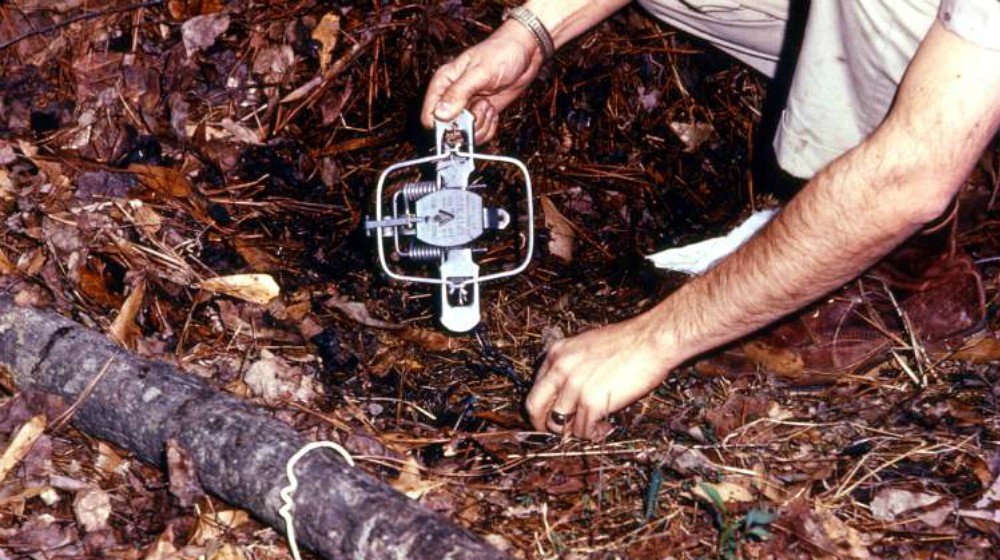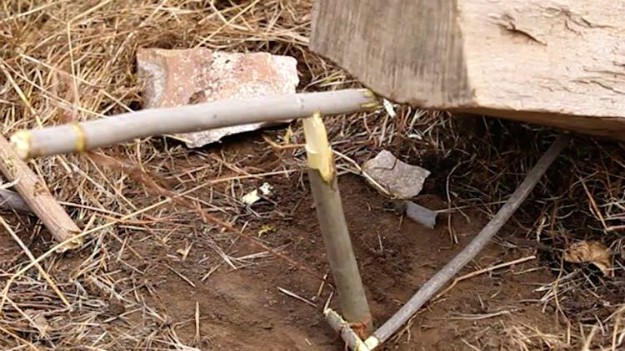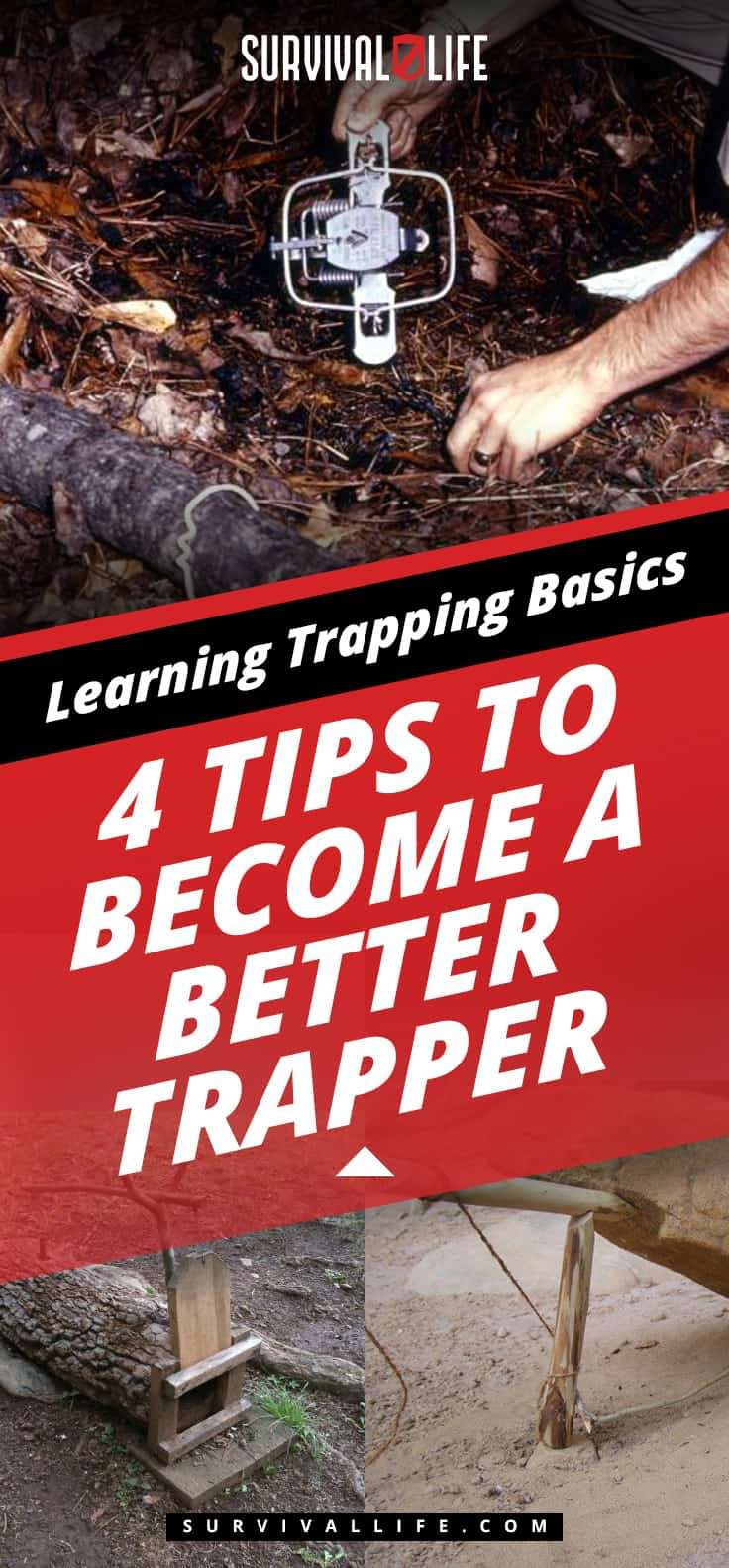Trapping
4 Tips To Become A Better Trapper | Learning Trapping Basics

Knowing some trapping basics is important for your wilderness adventures. Here are essential tips to get you to start practicing.
In this article:
Be a Better Trapper with These Trapping Basics
Learn to Trap and Have Food for Survival
When you find yourself in a survival situation in the wilderness, food is one of your top priorities. However, you have to find a way to collect animal protein without spending all your energy and time hunting or fishing. Aside from being a way to find food, it’s also important for trapping predators.
Trapping is the clear solution, but it is much more difficult than it sounds. I used to run the marten lines with my uncle, and there were plenty of mornings when we would come home empty-handed. In this article, we will cover the best ways to become successful by learning trapping basics.
No matter what your target animal is or what kind of trap you are setting, there are some constants that you should always remember.
1. More Is Better
Many people set two or three traps and are disappointed when they come home without any meat. A successful trap line typically has between 15 and 30 traps. You do not have to set all your trapping supplies all at once, but that should be your goal.
2. Always Use Bait If Possible
Animal signs tell you animals are in the area. If you want to ensure they trip your trigger, then you need bait. The type of bait will vary based on the animal.
3. Try to Cover Your Scent and the Trap
Two common reasons why traps do not work is the trap area smells like you or the trap itself is visible. Cover your scent with pine needles or charcoal. Cover the trap with leaves and twigs that will not interfere with its action. Be stealthy and camouflage your trap from your prey.
4. Always Check Your Traps at Least Once Daily
You are not the only carnivore in the woods If you leave a trapped animal too long, another animal will eat it first.
https://www.facebook.com/SurvivalLife/posts/1536448126407027?__tn__=-R
Modern Traps
Your trapping gear list will benefit from modern traps. By far, the most effective way to run a successful trap line is to use modern steel traps for your main beginner trapping equipment. These will kill, disable, or hold an animal in place until you can check your line.
The two most common animals I see trapped are beavers and marten. Both of these animals are best targeted with a steel snap trap. When the trigger is tripped, the mouth of the trap snaps down on the animal holding it in place.
For beavers, you want to attach your trap to a pole, cut a hole in the ice near the entrance to the beaver lodge, and bait it with some poplar branches. In the summer, you can stake the trap near slides or lodges, but it does not work as well because of the ample food sources available.
For martens, you want to put your bait meat in the back of a mailbox or similar structure. Set your trap just inside and attach it to a diagonal log. Often, trappers use leftover moose or elk hide for bait. The mailbox forces the animal to trip the trigger.
Snares

Sneaky Survival Snare Traps to Keep You Alive | Primitive Trapping Photo by Survival Life
Snares are a more primitive type of trap, but they can still work just fine. You can buy steel traps for a few bucks that work much better than other options. If you want to make your own snares, I suggest copper wire instead of cordage. The wire allows you to manipulate the loop of the snare to hold the position you want. You can use cordage if you have no wire.
For making your own snare, you just want to make a slip knot and attach the other end to something stable. For most animals, you want the snare loop to be vertical and set at the height of your target animal’s head. You can even add a spring pole to the trap if you want to make it snap tight more aggressively.
Deadfalls

How To Build a 10-Minute Paiute Deadfall Trap Photo by Survival Life
Deadfall traps are most commonly used for smaller animals and use the weight of a large flat rock to crush the prey. For this trap, you want two sticks with one being slightly curved. The straight stick holds the weight of the rock, while the curved stick is your trigger stick.
You need to carve the trigger stick flat on one end and pointed on the other. The flat end sits between the straight stick and the rock, and your bait goes on the pointed end. The curve should dip back to place your bait in the back of the trap. With any pressure, the sticks should collapse and the rock should fall. You may want to try it out a few times before moving on.
The most important point I can emphasize is that trapping takes practice. This is true more so than just about every other survival skill. Even if you only have time to try out a few traps at a time, get out there and see what works. You will appreciate the skill if you ever find yourself in a position where your life depends upon it.
Which one of these trapping techniques for beginners do you want to try for your first venture? Share your thoughts in the comments section below!
Up Next: How to Find Edible Plants in the Wild
Follow us on Facebook, Instagram, Twitter, Pinterest, and Tumblr!

Editor’s Note: This post was originally published on July 2, 2017, and has been updated for quality and relevancy.
-

 Paracord Projects1 year ago
Paracord Projects1 year agoParacord Projects | 36 Cool Paracord Ideas For Your Paracord Survival Projects
-

 Paracord Projects1 year ago
Paracord Projects1 year agoHow To Make Paracord Survival Bracelets | DIY Survival Prepping
-

 Medical Care1 year ago
Medical Care1 year ago21 Home Remedies For Toothache Pain Relief
-

 Knife Laws1 year ago
Knife Laws1 year agoAre Switchblades Legal? Knife Laws By State
-

 Do It Yourself1 year ago
Do It Yourself1 year agoSurvival DIY: How To Melt Aluminum Cans For Casting






Pingback: Survival Hacks For True Food Independence • Concerned Patriot
Pingback: 5 Sneaky Survival Snare Traps to Keep You Alive | Survival Life
Pingback: 5 Sneaky Survival Snare Traps to Keep You Alive | Primitive Trapping - Survive!
Pingback: 4 Tips To Become A Better Trapper | Learning Trapping Basics | Primitive technology
Pingback: 4 Tips To Become A Better Trapper | Learning Trapping Basics - Survive!
Pingback: 4 Tips To Become A Better Trapper | Learning Trapping Basics - Survival Patch
Pingback: 4 Tips To Become A Better Trapper | Learning Trapping Basics
Pingback: 4 Tips To Become A Better Trapper | Learning Trapping Basics | Life Off The Grid
Pingback: Top Squirrel Hunting Tips And Tricks For Beginners
Pingback: Paracord Bracelets | 10 Ways on How to Use Them to Save Your Life
Pingback: Top 10 Reasons To Never Leave Home Without A Paracord Bracelet – Ultimate Survival Alerts
Pingback: Top Squirrel Hunting Tips And Tricks For Beginners – Ultimate Survival Alerts
Pingback: Top 10 Reasons To Never Leave Home Without A Paracord Bracelet
Pingback: The Preppers' Guide to Winter Survival
Pingback: cleaning for housing associations oxford
Pingback: The Prepper’s Guide To Winter Survival - Survive!
Pingback: The Prepper’s Guide To Winter Survival | Primitive technology
Pingback: The Prepper’s Guide To Winter Survival – Ultimate Survival Alerts
Pingback: Important Info ! – AcePrepper Blog
Pingback: 5 Sneaky Survival Snare Traps To Keep You Alive | Primitive Trapping – Ultimate Survival Alerts
Pingback: Squirrel Snare: Trap For Your Life (Part 1) | Survival Life
Pingback: The Squirrel Snare: Trap For Your Life (Part 1) – Ultimate Survival Alerts
Pingback: Basic Snare: Trap For Your Life (Part 2) | Survival Life
Pingback: 8 Unusual Booby Traps To Protect Your Home – My WordPress
Pingback: 8 Booby Traps To Shield Your Residence – outdoorequipmentguide.com
Pingback: 8 Booby Traps To Protect Your Home - Survival Shot
Pingback: 8 Booby Traps To Protect Your Home - Les Recettes Savoureuses
Pingback: 8 Booby Traps To Protect Your Home | Free Patriot Gear